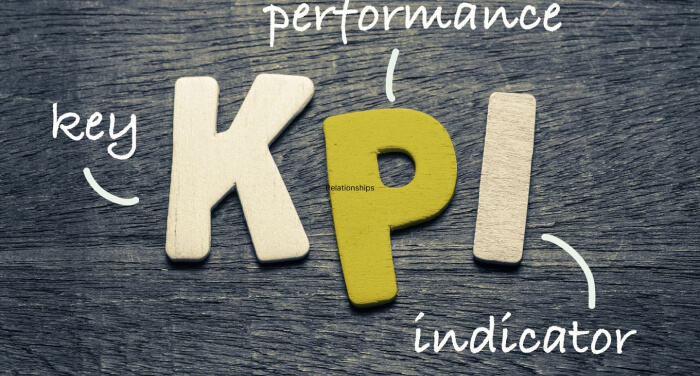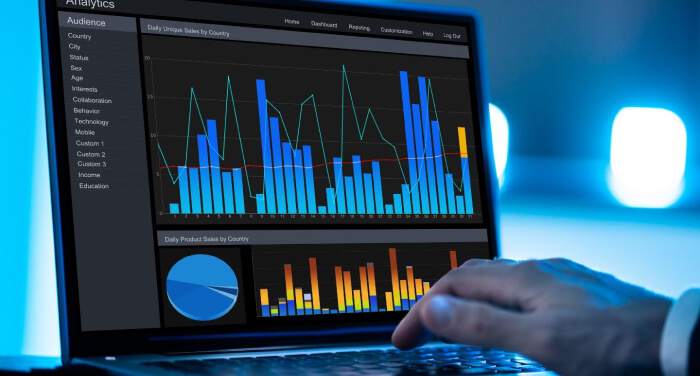Leveraging Training Analytics for Employee Development
Table of Contents
Introduction
In today’s rapidly evolving business landscape, employee development is more critical than ever. To remain competitive and stay ahead of the curve, organizations must invest in the growth and skill enhancement of their workforce continually. Training and development programs play a pivotal role in achieving this goal. However, how can you ensure that your training initiatives are not just effective but are delivering the desired results? This is where training analytics, in conjunction with digital Certificates, come into play.
In this comprehensive guide, we will embark on a journey that explores the synergy between training analytics and online Certificates, shedding light on how these dynamic forces can drive employee development to new heights.
We will navigate through the intricacies of training analytics, unveil the tools and techniques for collecting and analyzing training data, decode the significance of Key Performance Indicators (KPIs) in training, delve into the transformative power of dashboards and reporting, and ultimately arrive at a compelling conclusion. By the end of this journey, you will be equipped with a profound understanding of how to leverage training analytics and online Certificates to maximize employee development within your organization.
Introduction to Training Analytics

Training analytics, a subset of the broader learning analytics domain, encompasses the systematic collection, analysis, and interpretation of data related to training programs. It provides organizations with a comprehensive lens to evaluate the effectiveness of their training efforts, identify areas for improvement, and make informed decisions about their training investments. By leveraging training analytics, organizations can transform their training programs from mere compliance exercises into strategic drivers of employee growth and organizational success.
What is Training Analytics?
Training analytics, often referred to as learning analytics, is the systematic process that involves the collection, measurement, and analysis of data related to training and development programs within an organization. It involves the meticulous tracking and assessment of various training activities to derive insights and make data-driven decisions. And also, aims to provide actionable insights by methodically tracking various training activities and assessing their impact on organizational goals.
Benefits of Training Analytics
There are numerous benefits to implementing training analytics in organizations. These benefits include:
- Improved training effectiveness: By understanding how employees are learning and what they are retaining, organizations can make informed decisions about how to improve their training programs.
- Increased employee engagement: By tracking employee participation and engagement in training, organizations can identify and address any barriers to learning.
- Reduced training costs: By identifying which training programs are most effective, organizations can focus their resources on the programs that are most likely to yield the desired results.
- Enhanced decision-making: By providing data-driven insights, training analytics can help organizations make informed decisions about their training investments.
The Role of Training Analytics in Employee Development
Employee development is a multifaceted journey that encompasses skill enhancement, knowledge enrichment, and behavioral transformation. Training analytics plays a vital role in this journey by enabling organizations to:
- Assess the effectiveness of training programs.
- Identify areas that need improvement.
- Optimize resource allocation.
- Measure the return on investment (ROI) of training initiatives.
Collecting and Analyzing Training Data

Now that we comprehend the significance of training analytics, let’s explore the tools and techniques that enable effective data collection and analysis. Collecting and analyzing training data is a critical step in the training analytics process. There are a variety of tools and techniques that can be used to collect and analyze training data, including:
- Learning management systems (LMS): LMSs track a variety of data related to training, such as course completion rates, test scores, and participation in online discussions.
- Surveys and assessments: Surveys and assessments can be used to gather qualitative and quantitative data about employee perceptions of training, knowledge and skills gained, and the application of training on the job.
- Performance data: Performance data, such as sales numbers, customer satisfaction ratings, and productivity metrics, can be used to measure the long-term impact of training on business outcomes.
Data Sources for Training Analytics:
To initiate the journey, it is imperative to identify the primary sources of data that can be harnessed for training analytics. These sources may include:
- Learning Management Systems (LMS)
- Surveys and feedback forms
- Skill assessment tests
- Training attendance records
- Online course platforms
- Employee performance data
The Precision of Data Collection Techniques:
The success of training analytics hinges on the accurate and systematic collection of data. Explore the techniques and best practices for data collection, which include:
- Real-time tracking of learner progress.
- Automated data integration from various sources.
- Consistent and standardized data entry procedures.
Data Analysis Methods: Unearthing Insights
Once the data is collected, the next step is to analyze it effectively. Learn about various data analysis methods, including:
- Descriptive analytics: Understanding what has happened.
- Diagnostic analytics: Discovering why it happened.
- Predictive analytics: Forecasting what might happen.
- Prescriptive analytics: Recommending actions based on the data.
Key Performance Indicators (KPIs) in Training

Now that we have collected data, it’s time to determine what to measure and why. Key Performance Indicators (KPIs) are fundamental metrics that assist organizations in assessing the success of their training programs. Key performance indicators (KPIs) are specific, measurable, achievable, relevant, and time-bound (SMART) metrics that are used to track the progress of training programs. The specific KPIs that are most relevant will vary depending on the organization and its training goals. However, some common KPIs in training include:
- Training completion rate: This KPI measures the percentage of employees who complete a given training program.
- Knowledge and skill gain: This KPI measures the improvement in employee knowledge and skills as a result of training.
- Application of training on the job: This KPI measures the extent to which employees are applying the skills and knowledge they have gained from training to their jobs.
- Employee engagement: This KPI measures the level of employee engagement in training, such as participation in online discussions and completion of optional activities.
Common KPIs in Training Analytics:
Some of the key KPIs in training analytics encompass:
- Completion rates: Measuring the percentage of learners who complete a training program.
- Time to competency: Evaluating how long it takes for employees to attain the desired skill level.
- Skill proficiency: Assessing the level of competence acquired by employees.
- Knowledge retention: Measuring how well employees retain what they’ve learned.
- Cost per learner: Determining the cost-effectiveness of training programs.
Why Measure KPIs in Training?
Understanding the “why” behind KPI measurement is pivotal. By tracking KPIs, organizations can:
- Identify areas in training programs that require improvement.
- Make informed decisions regarding resource allocation.
- Demonstrate the ROI of training initiatives.
- Continuously adapt and evolve their training strategies based on data-driven insights.
Dashboards and Reporting

Collecting data and measuring KPIs is just the starting point. The true potential of training analytics lies in transforming raw data into actionable insights that drive meaningful changes and improvements. Once training data has been collected and analyzed, it is important to visualize the data in a way that is easy to understand and actionable. Dashboards and reports can be used to present training data clearly and concisely, making it easier for stakeholders to identify trends, patterns, and areas for improvement.
Effective Training Analytics Dashboards and Reports
Effective training analytics dashboards and reports should be:
- Visually appealing: The use of charts, graphs, and other visuals can make data more engaging and easier to understand.
- Actionable: The data should be presented in a way that can be used to make informed decisions about training.
- Customizable: The dashboards and reports should be able to be customized to meet the specific needs of the organization.
The Role of Dashboards
Dashboards serve as the visual representation of your training analytics data. They offer a real-time snapshot of training performance, enabling stakeholders to quickly grasp the state of employee development.
Components of an Effective Training Dashboard
To create an effective training dashboard, consider including:
- Clear visualizations: Charts, graphs, and tables that provide easy-to-understand insights.
- Customization options: Allowing users to tailor the dashboard to their specific needs.
- Real-time data updates: Ensuring that the dashboard reflects the most current information.
- Drill-down capabilities: Allowing users to explore data at a granular level.
Reporting for Informed Decision-Making
In addition to dashboards, reporting plays a critical role in the training analytics process. Reports offer detailed, structured insights that can inform decision-making at various levels within the organization.
The Synergy of Training Analytics and online Certificates
As we have explored the dimensions of training analytics, it is essential to acknowledge the transformative power of combining training analytics with online Certificates.
Online Certificates: A Testament of Achievement
Online certificates have emerged as a powerful tool for validating the achievements and skills acquired by learners and professionals. They offer a digital representation of accomplishments and provide a tangible acknowledgment of an individual’s capabilities.
Integration of online Certificates and Training Analytics
The integration of online Certificates with training analytics creates a dynamic synergy that enhances the value and credibility of training programs. This integration facilitates:
- A seamless process for creating and distributing online Certificates.
- A secure and easily verifiable method for certifying achievements.
- Increased motivation and engagement among learners through tangible recognition.
- Enhanced transparency and credibility in employee development programs.
Conclusion
Training analytics is a powerful tool that can help organizations improve the effectiveness of their training programs and make informed decisions about their training investments. By collecting, analyzing, and visualizing training data, organizations can gain valuable insights into how employees are learning, what they are retaining, and the impact of training on business outcomes.
With this information, organizations can make data-driven decisions about their training programs, leading to a more engaged, productive, and successful workforce. In this guide, we’ve explored the world of training analytics and its significance in employee development. We’ve covered the basics of training analytics, discussed tools and techniques for data collection and analysis, delved into essential KPIs, and emphasized the role of dashboards and reporting in turning data into actionable insights.
As organizations continue to invest in the growth and development of their workforce, leveraging training analytics becomes not just a best practice but a necessity. By harnessing the power of data, organizations can make informed decisions, enhance training programs, and ultimately drive the success of their employees.
The journey from data to insights may appear daunting, but with the right tools, techniques, and strategies in place, it becomes a manageable and rewarding endeavor. Whether you’re a learning and development professional, a training manager, or an organizational leader, the principles of training analytics discussed in this guide can empower you to elevate your employee development initiatives to new heights.
In the evolving landscape of employee development, it’s not merely about offering training programs; it’s about optimizing them for the best results. Training analytics and online Certificates are powerful tools that can help your organization stay competitive, adapt to change, and cultivate a culture of continuous learning and growth. By understanding the intricacies of training analytics and implementing them effectively, you’ll be well on your way to achieving these goals and driving success in your organization.
So, what’s next for your organization’s training and development efforts? It’s time to take the knowledge gained from this guide and embark on your journey from data to insights, leveraging training analytics for employee development. The future of your workforce’s growth and success awaits, and with the right strategies in place, you can lead the way to a brighter, more prosperous tomorrow.



